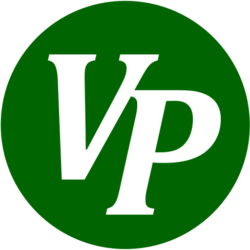The Czech and many foreign law regulation provides additional protection for patented pharmaceutical products or plant-protective agents. The validity period of the patent has been extended by the amount of time necessary to obtaining a marketing licence from the competent authorities decreased by 5 years, i.e. this provides for a longer patent protection whereby the normal 20-year period of validity of the patent may be extended to at least 25 years. The supplementary protection certificate must be requested within 6 months of the date of first authorisation to market the product as a medicinal product or the date of grant of the patent, whichever is the latest.
The legal effect of a supplementary protection certificate is substantially the same as that of the patent upon which it is based.
Our international presence and our network of associate Intellectual Property firms around the globe allow us to move swiftly to protect our clients’ ideas almost anywhere on Earth.
GRANT OF SUPPLEMENTARY PROTECTION CERTIFICATES FOR MEDICAMENTS AND PLANT PROTECTION PRODUCTS
The National Office shall grant supplementary protection certificates (thereinafter “certificates”) for substances protected on the territory of the Czech Republic by the valid patent, if they are the active substances of the products which prior being placed on the market, are subject to the registration according to the special regulations.
The active substance shall mean a chemically manufactured substance or a combination of substances, a micro-organism or a combination of micro-organisms, which have general or specific therapeutic or preventive effects with regard to human or animal diseases or which may be administered to the human beings or animals in order to disease diagnosis, improvement or arrangement of their health condition or which are destined to the protection of plants or plant products.
The product shall mean any active substance or a combination containing one or more active substances put up in the form for being placed on the market as a medikament or a plant protection product.
Application for a certificate
The application for a certificate shall be filed by the proprietor of the patent, whose subject-matter is a substance, except for the patent granted according to national regulation, or a method for obtaining a substance or a use of a substance as a medicament or as a plant protection product (thereinafter “basic patent”), or his successor in title.
The application for a certificate shall be filed within 6 months from the date on which the decision on the registration of the product is issued according to special regulations, if the registration is made prior to the grant of the basic patent, the application for a certificate shall be filed within the period of 6 months from the date on which the patent is granted.
When filing the application for a certificate, the applicant shall pay the administrative fee according to the special regulations. The Office shall record the filing of the application for a certificate to the Patent Register and publish it in the Bulletin. The publication shall contain the name and address of the applicant, the number of the basic patent and the title of the invention protected by the patent, the number and the date of the registration, including of the mention of the product, putting on the market of which is authorised by means of this registration.
Subject-matter and effects of the certificate
Within the limits of the protection conferred by the basic patent, the protection by the certificate shall extend to the chemical substance or a combination of substances, micro-organism or a combination of micro-organisms, which represent the active substance of the registered product, as well as to every use of the subject-matter of the patent as a medicament or plant protection product, which was authorised before the expiry of the certificate. The certificate shall confer the same rights as conferred by the basic patent; the certificate shall be subject to the same limitations and the same obligations.
Duration of the certificate
The certificate shall take effect for a period equal to the period, which elapsed between the filing date of the basic patent application and the date of the first registration enabling to place the product on the market in the Czech Republic as a medicament or plant protection product, reduced by 5 years, but at most 5 years from the date, on which the certificate takes effect. The certificate shall take effect after the expiry of the lawful term of the basic patent. For maintaining the certificate, the proprietor shall pay yearly administrative fees according to the special regulations. The rights of third persons, which after the expiry of the period for payment of the maintenance fee without such fee being paid, in good faith have begun to make a use of the subject-matter of the invention or have realised serious and effective preparations to use this invention, are not affected by the payment of this fee in the additional time limit.
